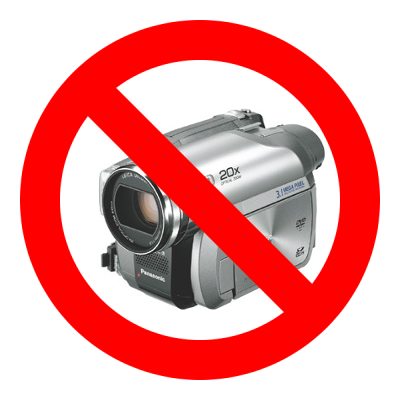 |
| CC courtesy of No videos on Flickr, Please by Muhammad Ghouri on Flickr |
Demonstration:
Below is a video I made about Punnett Squares. It is about 11 minutes long.
As a novice, this video took me days to create and edit and it still has some important flaws that need to be reworked. I expect the editing time to decrease as I gain more experience. This 11 minute video is the only time that I provide planned direct instruction. It is the bulk of the Flip phase of the mastery learning cycle of Punnett Squares. The students also have to record guided notes from a template handout. After watching the video, they have to complete a google form, which contain understanding-level questions and allow students to pose questions. All of the responses get sent to me prior to class, which can help me plan accordingly. Students see the answer key for the video questions by submitting their responses in the google form. So even within the Flip phase of the learning cycle, the video is accompanied with guided notes and google form questions.
The Flip phase only makes up a part of the learning cycle. In fact, the learning cycle begins with an engage and explore phase, which are conveniently combined into the Explore phase imaged in the learning cycles below.
 |
| Mastery Learning Cycles - inspired by @Ramsey Musallam |
In the exploration phase, students are first met with the mastery objectives for the unit. Students are expected to keep track of which objectives they have "met" and which level of mastery they reached. They are also responsible for providing evidence for their perceived level of mastery. After seeing the objectives, they are engaged with a controversial question about designing babies. They complete a poll and participate in a virtual discussion online. The second half of the exploration phase is an activity in which they simulate making babies with a classmate. They use their traits, which were inventoried in a previous lab, to make deductions about their genetic makeup. Once they have ascertained their genetic makeup, they "reproduce" with a partner and make predictions about their offspring using the rules of genetics introduced in the baby making activity. After making two offspring, they answer questions which culminate with an application task to make statistical predictions about future offspring. I expect that some students will be able to derive a way to tackle this application question but most will have some difficulty. This is where the flipped video comes into play. They'll learn about Punnett Squares while reinforcing and introducing vocabulary and seeing a sample problem solved in the video.
After watching the video and completing the other requirements of the Flip phase, students enter the Apply phase. They apply what they learned from the video (and explore phase) to complete different activities. There are several choices (a problem set and two online simulations) but they all require creating and solving Punnett Square problems. Students get instant feedback. They then return to the application questions from the baby making activity. At this point, they should easily be able to make generalized predictions about their offspring.
Once students finish the Apply phase, they can demonstrate different levels of mastery. In my current version of this learning cycle, they can choose assignments aligned with the higher order thinking levels of the revised Blooms taxonomy: analyze, evaluate, create. Completion of the mastery task allow students to take a Moodle quiz, which gives each student a different version each time. Students who are unsuccessful on the quiz, can enter a remediation phase. Once students successfully complete the quiz, they complete a mini project where they research a genetic disorder and create a presentation, which must include a genetics problem incorporating the disorder.
All of the steps of the learning cycle are captured in the MentorMob playlist below. Hopefully, through this demonstration, you'll be convinced of one of my major understandings from FlipCon13: flipping is not just about the videos!"
Create your own Playlist on MentorMob!
No comments:
Post a Comment